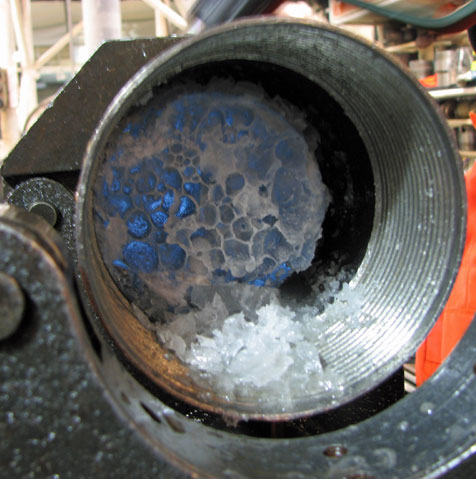Twenty years ago, scientists first theorized that Lake Vostok, the gigantic subglacial lake in central East Antarctica, harbored a unique microbial community that evolved in isolation over millions of years and contained records of ancient climate change. We now know that more than 400 subglacial lakes exist across Antarctica, that many of them regularly discharge and receive water to and from the subglacial system, and that ice flow is affected by such behavior. In just 2 decades, the notion of the Antarctic continent as a frozen, unvarying, and lifeless place has changed because of the discovery of dynamic and extensive drainage systems at its base.

The Scientific Committee on Antarctic Research (SCAR) formed a committee in 2000 to oversee the exploration of subglacial lakes. Between 2000 and 2009, the committee encouraged the development of three programs to explore Lake Vostok, Lake Ellsworth (a deepwater lake in the center of West Antarctica), and Lake Whillans (a shallow “active” lake at the edge of West Antarctica).
To discuss the results from these pioneering programs and to plan future work, 60 researchers from 12 nations gathered in the UK Royal Society’s Chicheley Hall for the seventh international meeting on subglacial lake environments. The meeting coincided with SCAR’s 20-year horizon-scanning exercise, in which logistics and engineering groups identified 80 questions that could drive research in the Antarctic going forward.
Science Updates and Research Priorities
Participants heard how, in February 2012, Russian scientists drilled into the top of Lake Vostok using the Vostok Station ice corer and that this feat was repeated in January 2015. British scientists explained why, in December 2012, an attempt to access Lake Ellsworth was halted when a specially designed clean deep-ice hot-water drill experienced technical difficulties. U.S. scientists then described the successful clean access and sampling of subglacial Lake Whillans in January 2013, revealing a thriving microbial ecosystem in the lake water and sediments.

Scientists attending the meeting identified three priority recommendations for future research. First, development of technology for clean, reliable deep-ice access and subsequent in situ data acquisition is essential for subglacial lake exploration. Second, a variety of subglacial environments must be considered for exploration before the full extent of subglacial biodiversity and cross correlation of climate records can be evaluated. Finally, international cooperation is necessary to optimize resources, allowing the sharing of logistics, equipment, and samples.
Participants debated the merits of targets for future exploration, including deepwater lakes at the ice sheet center, hydrologically active lakes closer to the margin, former subglacial lakes now covered with thin ice, and deep sedimentary basins where extensive groundwater may exist.
Discussions also revealed that scientists now have an excellent understanding of how to execute the exploration of a subglacial lake, first envisaged 20 years ago for Lake Vostok, using hot-water drilling and a variety of instrumentation packages and proven cleanliness techniques. It is entirely feasible that this and other subglacial lakes can be explored thoroughly in the coming decade, making research priorities set at the meeting pivotal to the history of Antarctic subglacial exploration.
—Martin Siegert, Grantham Institute, Imperial College London, South Kensington, London, U. K.; email: [email protected]; John Priscu, Montana State University, Bozeman; and Irina Alekhina, Arctic and Antarctic Research Institute, St. Petersburg, Russia
Citation: Siegert, M., J. Priscu, and I. Alekhina (2015), The future of Antarctic subglacial lake exploration, Eos, 96, doi:10.1029/2015EO032249. Published on 10 July 2015.
Text © 2015. The authors. CC BY 3.0
Except where otherwise noted, images are subject to copyright. Any reuse without express permission from the copyright owner is prohibited.

